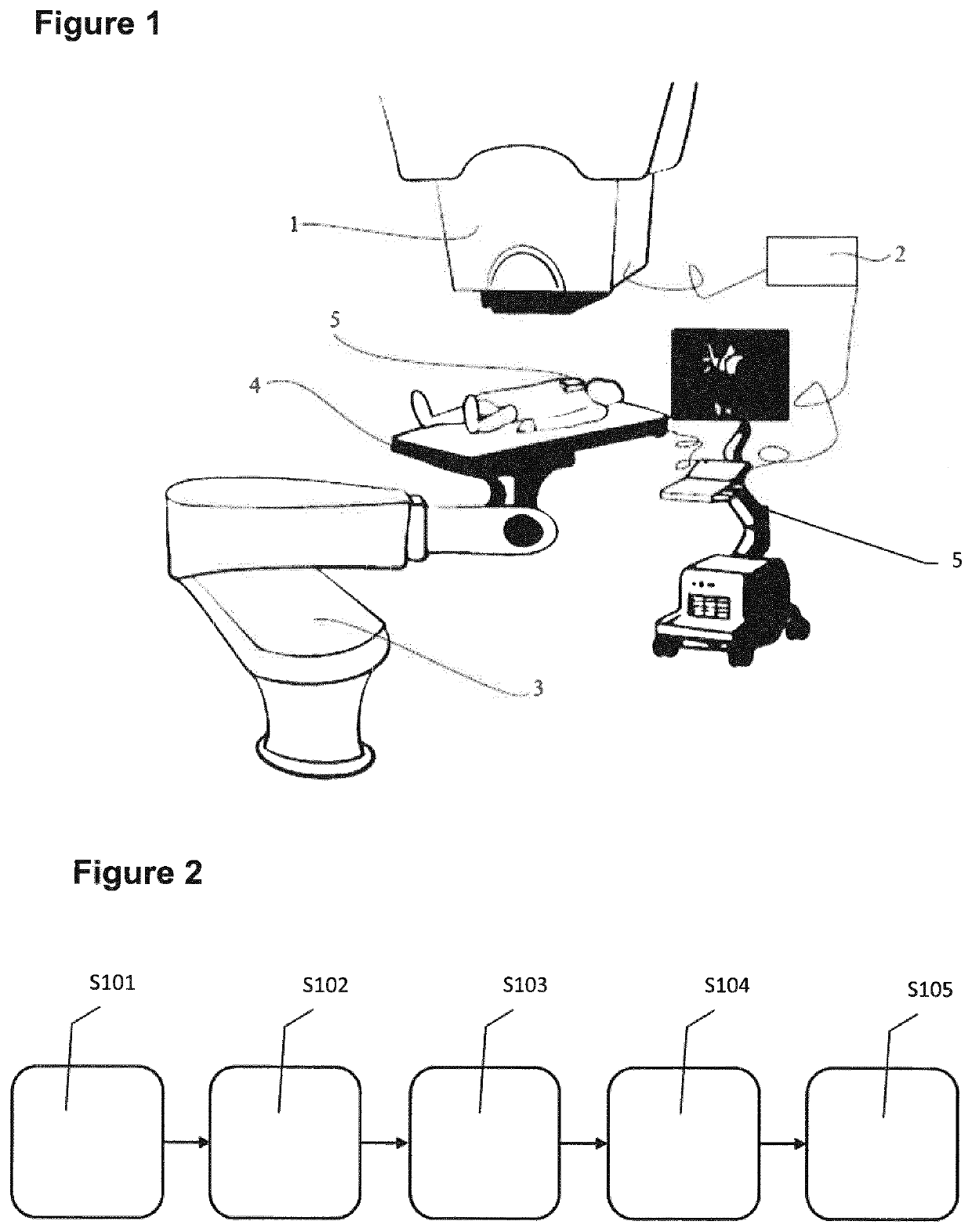Heart arrhythmia non-invasive treatment device and method
a non-invasive treatment and heart arrhythmia technology, applied in the field of methods and devices for treating heart arrhythmias, can solve the problems of heart arrhythmias that are a problem with the rate or rhythm of heartbeat, heart arrhythmias are a problem with irregular pattern, heart beats too quickly, too slowly, etc., to achieve the effect of effectively irradiating the target, saving sensitive surrounding healthy tissues, and easy identification of structures
- Summary
- Abstract
- Description
- Claims
- Application Information
AI Technical Summary
Benefits of technology
Problems solved by technology
Method used
Image
Examples
Embodiment Construction
[0022]The present detailed description is intended to illustrate the invention in a non-limitative manner since any feature of an embodiment may be combined with any other feature of a different embodiment in an advantageous manner.
[0023]In the following description several terms are used in a specific way which are defined below:
[0024]The expression ‘treatment / irradiation plan’ refers to the patient-specific list of treatment properties (treatment room, type and position of the patient positioning system, beam species, irradiation angle, beam size, beam position, beam energy, beam intensity, number of treatment sessions, among others) in order to irradiate the appropriate volume in the patient body with the required therapeutic radiation dose. These properties are computed based on the planning CT (static or time-resolved), where the medical staff has defined the clinical target which should receive a given dose, the critical healthy tissues that should be irradiated in the least p...
PUM
 Login to View More
Login to View More Abstract
Description
Claims
Application Information
 Login to View More
Login to View More - R&D
- Intellectual Property
- Life Sciences
- Materials
- Tech Scout
- Unparalleled Data Quality
- Higher Quality Content
- 60% Fewer Hallucinations
Browse by: Latest US Patents, China's latest patents, Technical Efficacy Thesaurus, Application Domain, Technology Topic, Popular Technical Reports.
© 2025 PatSnap. All rights reserved.Legal|Privacy policy|Modern Slavery Act Transparency Statement|Sitemap|About US| Contact US: help@patsnap.com

